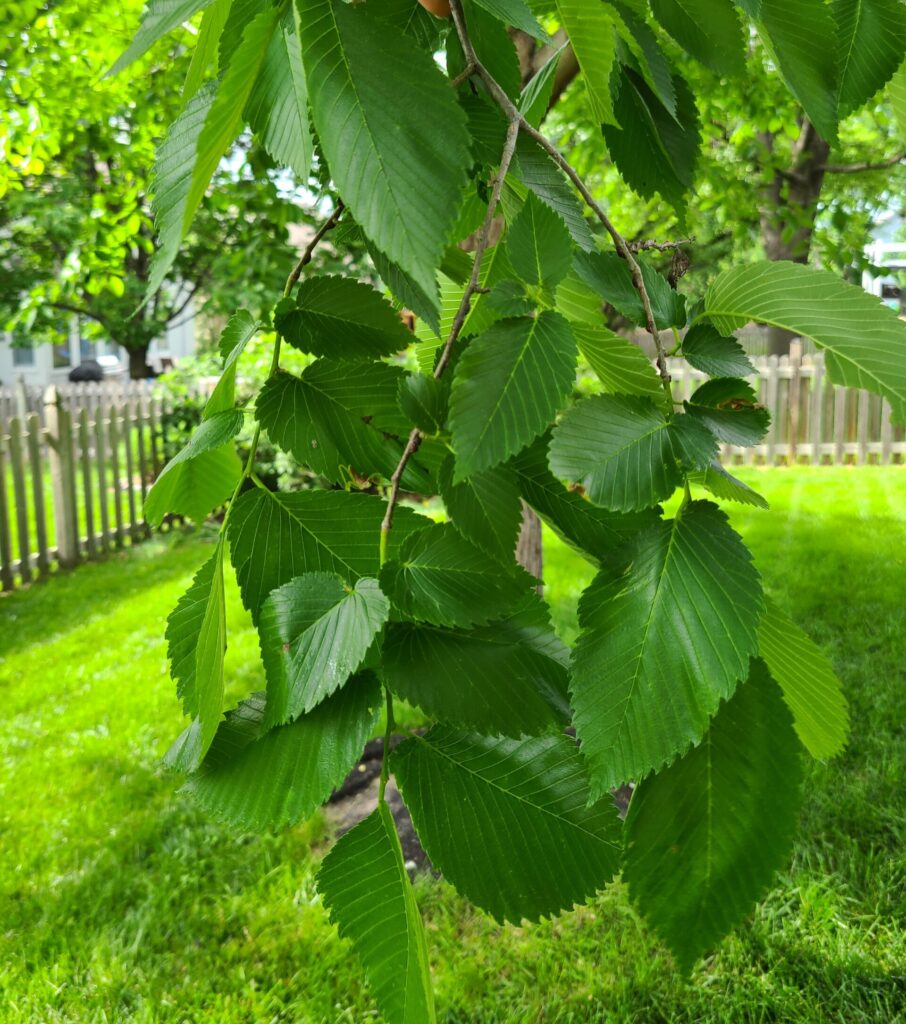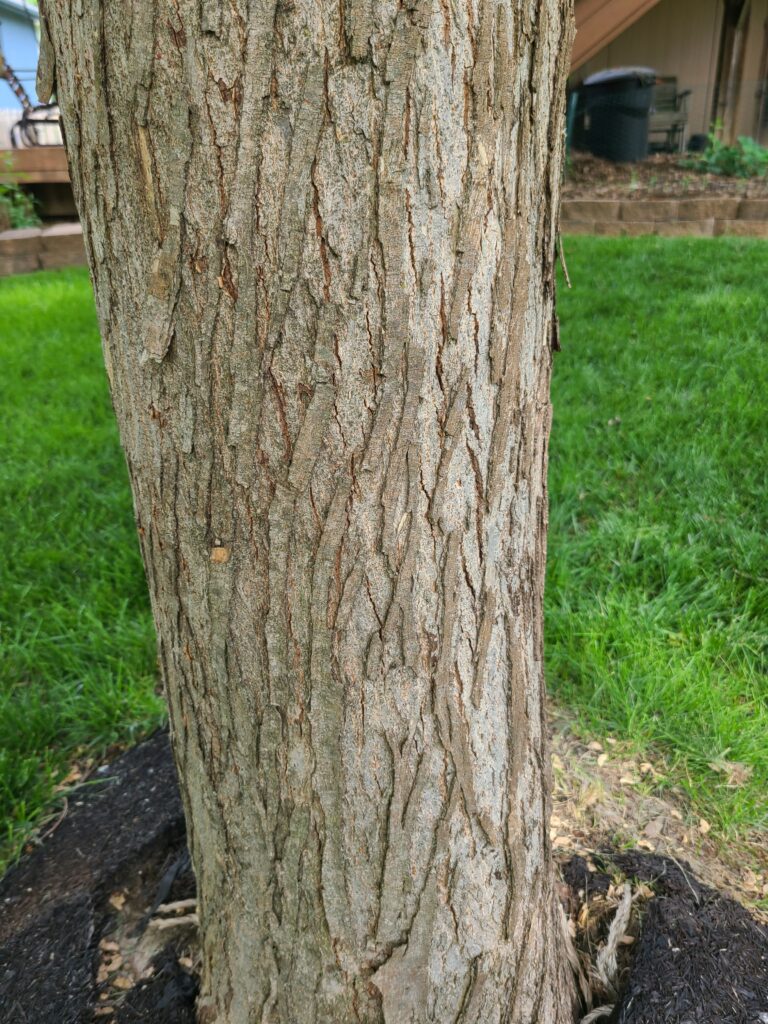
American Elm
Ulmas americana
Native Americans steeped the inner bark of elm trees and used the liquid to treat colds, coughs, and menstrual cramps. They also drank this liquid as a tea. The bark of the tree root was boiled and also used for medicinal purposes. Posts made from the tree were used to construct earth lodges and were burned as fuel.1
Since elm wood is hard and strong, it is used to construct furniture, flooring and fence posts. In the past it was widely used to make wheel hubs, saddle trees (the bases for saddles), ship’s hulls and agricultural and kitchen implements. The bark of the elm was used to tan leather and to water proof canoes. Fiber from the bark was used to make ropes, cords, and roofing felt.2
The seeds and buds of elms are eaten by many animals including deer and rodents such as squirrels, chipmunks and opossum. Upland game birds such as prairie-chickens and turkeys, and also songbirds such as chickadees and goldfinches, feed on the seeds. Deer and rabbits browse the leaves and beavers gnaw on the bark and wood. Many insects feed on elms such as caterpillars from both moths and butterflies, aphids, leafhoppers, walking sticks, and beetles, making the elm an indirect food source for birds needing protein to feed their hatchlings.3
The American elm used to dominate urban landscapes, but has been dramatically reduced by Dutch elm disease, a fungus that grows in the tree’s vascular tissue and interferes with the transfer of water, sap and nutrients. An elm can grow up to 100 feet tall and branch out into a large canopy.4 The American elm has been described as having a stately vase shape and was beloved as the American shade tree. The elm may be used as a lawn, shade or street tree, but it is not currently recommended for most landscape planting due to Dutch elm disease. Disease resistant varieties, such as the Ulmus americana “Valley Forge”, are promising but not totally immune.5
Photos


